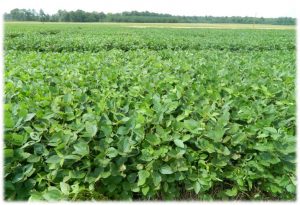June is usually the time of the year when full season soybean is kicking into high gear and we begin planting double-crop soybean. And like always, various issues are beginning to arise, whether its the weather or finding out mistakes made a few weeks earlier.
Unbelievably, double-crop soybean is wrapping up in many areas due to small grain maturing earlier than normal. Out of necessity, we were forced to harvest wheat and plant soybean at the same time we were trying to make timely postemergence herbicide applications and generally trying to pay attention to the rapidly growing soybean that we planted in April and May. But, issues such as these are not unusual.
This week, I thought I’d mention a few things that we are facing and continue to remind you of the need to plant as soon as possible and adjust seeding rates accordingly.
Planting Date. We are now losing about 1/2 bushel per acre per day with each delay in soybean planting. Plant as soon as possible, but don’t cause more serious problems by planting into too wet or dry soils.
Seeding Rate. My data indicates that seeding rates now need to be at least 180,000 seed per acre, even on the best of soils. I would bump those up about 20,000 seed for each week’s delay in planting. See Soybean Seeding Rates for June and Later for more information.
Replanting. Generally, replanting does not pay this time of the year (due to the planting date penalty) unless the stand is horrible. For more information, see Soybean Replant Decisions or contact me.
Seed Treatments. I’ve seen few benefits of fungicide or insecticide seed treatments this time of year. Plants usually emerge and grow quickly. The exception is wet soils – soybean will emerge very slow when soils are saturated. With that in mind, you may consider a fungicide on the seed if you have poorly-drained soils, your soils are already wet, and rain is predicted.
Seeding Depth. Those of you know that I usually don’t like to plant soybean greater than 1 inch. But, I’ve found that planting soybean at 1.5 inch (and occasionally 2 inches) works just fine when soils are warm. Sometimes, it’s better to plant deeper to hit moisture than to plant into dry soils.
Weeds. First, Drs. Charlie Cahoon and Mike Flessner is who you need to consult regarding weeds, but here are a few of my observations. We may have let a few weeds get too big for adequate control – this is especially a problem with glyphosate-resistant weeds. Marestail continues to be a problem. When this weed is glyphosate resistant and you’re not growing Liberty-Link soybean, about the only somewhat effective herbicide that we have left in our arsenal for Roundup Ready soybean is FirstRate, although a few other herbicides may burn the weed – just don’t expect very much from anything. I’ll let you mull over your other options if you have planted Xtend soybean. Finally, don’t depend on glyphosate alone – even if you weeds are not yet resistant, its a good practice to diversify to insure that they do not become so.

